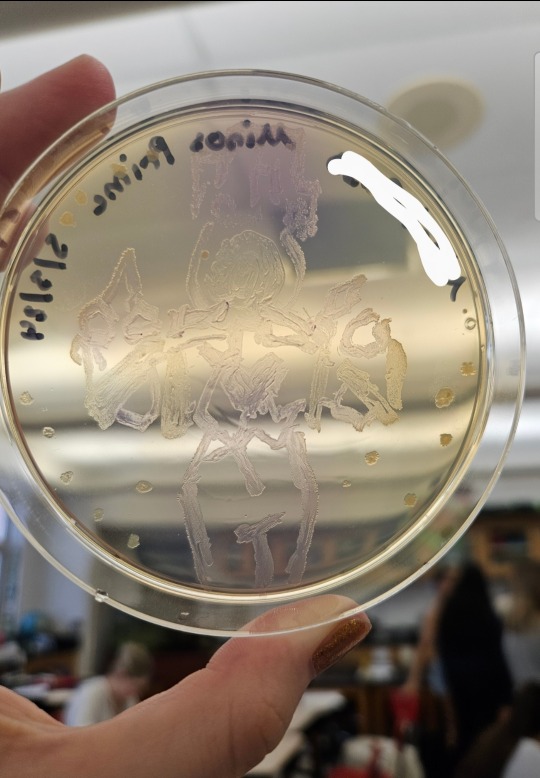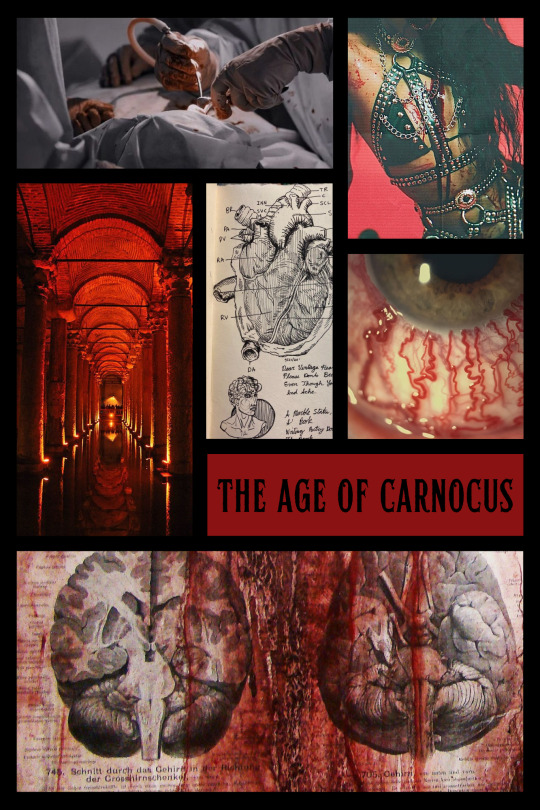#BioEngineering
Explore tagged Tumblr posts
Text
For the past two decades, scientists have been manipulating genes to grow human cells where you wouldn’t quite expect them. Human ears and skin have famously been grown on mice. More recently, early-stage human kidneys have even been grown in pig bellies. The world of bioengineering isn’t for the faint of heart. Much of this tinkering is done in the service of one day using genetically modified animals to create spare organs and tissue for human patients lacking access to donors. Now, according to a study published in the journal Stem Cells Translational Medicine, researchers have shown it’s possible to cultivate lab-grown human teeth cells inside of a pig’s mouth. The researchers believe these findings could one day lead to the development of biological tooth substitutes that could be used in place of imperfect synthetic dental implants currently used. The paper’s findings were first spotted by MIT Technology Review.
Continue Reading.
217 notes
·
View notes
Text
Colossal Biosciences did NOT 'de-extinct' dire wolves.
Just like in their previous success with breeding out mice with mammoth's wool, what they actually did is they chose a wolf species, which happened to have some genes very similar to dire wolves'. Then, they edited those genes, adjusting them to the reference (aka actual dire wolf genes found somewhere in frozen shit) and voila! Your 0.001% dire wolf is ready.
So, what we see in those articles are not "resurrected" old species, but only wolves with some dire wolf characteristics.
It doesn't make Colossal Biosciences any less cool though. You built a lego house with small bricks. Also, aside from goofing around with ancient animals' genes, this startup is also involved in increasing biodiversity, restoring the balance of ecosystems and helping animals. Isn't it lovely?
#bioengineering#dire wolf#genetics#colossal biosciences#science#zoology#dire wolves#wolf#nymph yaps#nymph stem
27 notes
·
View notes
Text

made minos prime out of gmo e. coli
#ultrakill#minos prime#ultrakill minos#biotechnology#bioengineering#i was gifted with the science autism#and i use it for fanart
121 notes
·
View notes
Link
These are some absolutely wild ideas, so before we get started, it's important to know that Michael Levin is no fringe scientist or crackpot. He's a director of the Allen Discovery Center at Tufts University, as well as the Tufts Center for Regenerative and Developmental Biology, and a co-director of the Institute for Computationally Designed Organisms. He's co-authored several hundred research papers, with nearly 30,000 citations, and has a list of distinguishing awards as long as your arm. All of which is to say: we can see why Levin's work might have flown under a lot of folks' radars; this quick summary is gonna get pretty 'out there.' But over more than two decades, he's earned the right to be taken seriously.
67 notes
·
View notes
Text
The woolly mouse is adorable and so are the puppies that look like dire wolves, but can we stop now? Can we please stop? We don't need mammoths. We don't need dire wolves. They don't have anywhere to live, their niche in the ecosystem doesn't exist anymore. Please don't make dinosaurs I see where you're looking. No. Do not make the torment nexus. We have way better stuff to apply biotech to.
#biotech#bioengineering#science#ethics#scientific ethics#woolly mouse#woolly mammoth#dire wolf#de extinction#dinosaurs#dinosaur#jurassic park
17 notes
·
View notes
Note

Normalize wetware. (I'd put in that post from toskarin that goes "I want ETERNAL games with HYPERREALISTIC graphics made by COMPUTERS THAT WERE ONCE PEOPLE and i'm not kidding)
11 notes
·
View notes
Text
I am researching prosthetics and amputation for my Echo modern AU fic and found this. So cool
10 notes
·
View notes
Text
prolly dont have enough audience for polls but
#polls#speculative biology#theoretical biology#← kinda?? i guess#bioengineering#kinda also. since i partially had body modification in mind when writing this →#transhumanism
5 notes
·
View notes
Text

15 August 2023
I'm back. Today marks the first day of my last academic year as an undergraduate student. I had a 3 hour long lecture in the morning which didn't really end well. I have been sick for the past 1 week and don't do well in cold spots as it aggravates my cough. So the 3 hour lecture felt more like torture to me. But hey, warm water helps a lot and it made me feel better.
I had my first lab session for my final year project today as well. It was really fun. I am looking forward to tomorrow as I have yet another lab session to check on my cell cultures. Hoping that the cells grow well!
#himmelstudies#study#studyblr#engineeringblr#engineering#studies#bioengineeringblr#bioengineeringstudyblr#bioengineer#bioengineering#academicsunite#academicunites#engblr#studying#lab
93 notes
·
View notes
Text

"Flesh cloned from tissues of the originals combined with advanced cybernetics create synthetic playthings for the wealthy."
Text and image(s) (unless otherwise specified) ©Copyright 2023 , 2025 Rob Bryan. On original artwork. "No copyright/intellectual property infringement intended." (Fair use is claimed. Photo, art or character rights are reserved, & belong to their respective owners.) Credit is given where possible. Sharing permitted with credit line. Documented permission is required for commercial use.
#jennifer aniston#ai#ai art#cyberpunk#cybernetics#bioengineering#cyborg#scifi#sci fi#women#portraiture#digital art#face#photo#photomanipulation#graphis
5 notes
·
View notes
Text
WIP INTRODUCTION: THE AGE OF CARNOCUS

genre: sci-fi, horror, dystopia, dark fantasy, speculative biology (yes. all of the above)
status: planning/drafting
type: novel series and worldbuilding project
In the near future, an alien has taken over the earth. With it, come its monstrous servants: amalgamations of flesh and bone. Desperate in this new world, people worship the alien as a god named Carnocus, and it gives them a gift: the ability to create their own amalgamations, but only if they eat raw human meat first. Centuries later, a theocracy hides the true nature of the gift, pretending that it is given only to a select few chosen by god. Only those who know how to activate the power have it, and thus only those part of the Clergy government have control. Yet, despite its already immense power, the Clergy wants more. A group of aspiring scientists is assembled at an academy that studies the gift. Their mission, as established by the Clergy, is to expand upon this gift and learn how to manipulate living tissue. As the students do their jobs, danger creeps up from the network of dungeons beneath them. Past Clergy experiments walk and talk, and Carnocus' own creatures sneak inside. Among them is a serial killer who can do what the Clergy cannot. As the students unravel the depths of Clergy conspiracy and of their own abilities, they must grapple with the question of what to tell and what to hide.
ahhh I love this project so much, I've been working on it for a while now and it is my current main project. It very much reflects my love for both horror and science, and explores themes of unethical experimentation, the concept of "the greater good", and more!
Featuring enemies to lovers, found family, haunted houses, and made up creatures.
Inspired by a variety of my favorite media, including NBC Hannibal, The Locked Tomb series by Tamsyn Muir, and Frankenstein by Mary Shelley.
Ask to be added/removed from taglist! I hope to be posting more soon, thanks for reading! Moodboard made using Canva with images found on Pinterest.
#the age of carnocus#wip introduction#vas's posts#horror writeblr#writers on tumblr#gothic horror#books#writer#scifi#speculative biology#dark fantasy#science#bioengineering#biology#mad scientist
67 notes
·
View notes
Text
Their results in the Journal of Medicinal Chemistry offer a new path forward in the development of drugs that could potentially help cure—rather than treat—HIV. Although effective treatments are available to manage HIV, a cure has remained elusive due to the virus’s ability to hide from the immune system, lying dormant in reservoirs of infected cells.
Continue Reading.
95 notes
·
View notes
Text
Everytime someone says "they brought dire wolves back", a bioengineer loses their wings
#and replaces them with curly wig and comically large red shoes#dire wolves#stemblr#science#bioengineering#science communication#genetics#nymph stem
9 notes
·
View notes
Text
12,500 Years Later Dire Wolves Reborn : Return of the Ice Age Predator
Colossal Biosciences has produced three dire wolf pups—two males and one female—using gene editing, cloning, and ancient DNA from fossils dated 13,000 to 72,000 years old. By editing 14 genes in gray wolf cells to match dire wolf traits like thick fur, stronger jaws, and broader skulls, scientists recreated the dire wolf phenotype. The embryos were implanted into domestic dogs.
The pups, born in late 2024 and early 2025, now live on a secure 2,000-acre site under strict oversight. While the animals are about 99.9% gray wolf, Colossal claims this is the first real proof of de-extinction in practice and a step toward reviving species like the mammoth and dodo. #direwolves #extinctanimals #sciencenews #biology #genetics #wildlife #conservation #DeExtinctionProject #animalscience #futureofscience #DireWolfDeExtinction #colossalbiosciences #geneticengineering #ExtinctSpeciesRevival #ancientdna #crisproducciones #DeExtinctionTechnology #wildlifeconservation #PleistoceneFauna #ResurrectionScience #bioengineering
#direwolves#extinctanimals#sciencenews#biology#genetics#wildlife#conservation#DeExtinctionProject#animalscience#futureofscience#DireWolfDeExtinction#colossalbiosciences#geneticengineering#ExtinctSpeciesRevival#ancientdna#crisproducciones#DeExtinctionTechnology#wildlifeconservation#PleistoceneFauna#ResurrectionScience#bioengineering#research#science#nature#biotechnology#technology#health#innovation
3 notes
·
View notes
Text
Blade Runner (1982)
==============
🌟 The X-MEN of Science: 🧬🔬 GENETICALLY ENGINEERED HUMANS
In our changing world, signs are pointing to the imminent arrival of genetically engineered humans. Similar to Blade Runner's Replicants, these beings mix artificial intelligence (AI) with bioengineering, blurring the line between human and machine… they have advanced cognitive abilities, emotions, and physical skills.
The term "genetically engineered humans" emphasizes the replication of human qualities through a blend of AI and bioengineering.
Imagine a future where head transplants, synthetic organs, and bionic eyes become integral parts of human augmentation.
The fusion of cutting-edge medical technologies with genetic programming is reshaping our understanding of what it means to be human.
#blade runner#cyberpunk aesthetic#scifi#cyberpunk movies#genetic engineering#bioengineering#artificial intelligence#bionic eye#replicants#humanoids#organ transplants
25 notes
·
View notes
Text
this radical bioengeneer is trying to REPLACE our natural corn-fed Gamers
youtube
12 notes
·
View notes